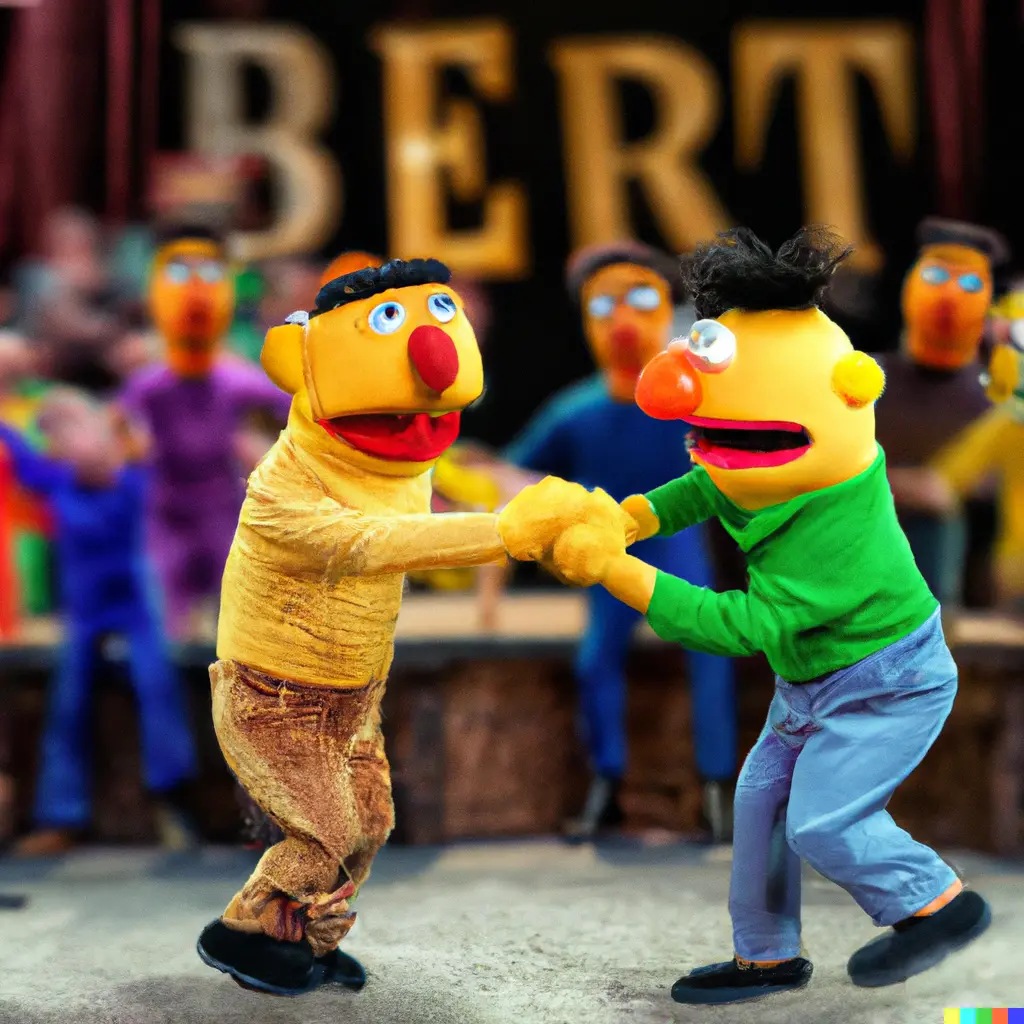
BERT Was Really Just Text Diffusion All Along
It turns out BERT's masked language training looks suspiciously like a single step of discrete text diffusion.
The mathematical divide between transformers and diffusion models might be thinner than we thought. Recent research suggests BERT’s masked language modeling objective is essentially identical to training a discrete text diffusion model for exactly one timestep.
The Mathematical Overlap That Changes Everything
At first glance, BERT and diffusion models couldn’t seem more different. BERT trains by randomly masking tokens and predicting them in a single forward pass, while diffusion models generate text through iterative refinement across multiple steps. But when you break down the mathematics, the training objectives reveal an uncanny similarity.
In discrete text diffusion, models learn to predict clean data from noisy inputs across multiple timesteps. The training objective involves summing denoising losses over all possible noise levels. BERT’s masked language modeling (MLM) simply pins this process to a fixed masking probability, typically 15%, effectively performing one diffusion step.
As Nathan Barry recently argued ↗, “BERT’s masked language modeling objective is the same training objective as text diffusion, but just for a subset of masking rates.” This insight reframes seven years of transformer development as a special case of a more general framework.
The Architectures Already Converge
The bridge between these worlds isn’t just theoretical, it’s already being built. Recent papers like Compressed and Smooth Latent Space for Text Diffusion Modeling ↗ show how BERT-like encoders are increasingly central to diffusion architectures:
- LD4LG trains diffusion models directly on compressed BART encodings
- PLANNER uses fine-tuned BERT to produce variational latent codes for diffusion
- TEncDM demonstrates Gaussian diffusion can operate on full-length BERT representations
These systems treat BERT not as a standalone model but as a feature extractor for diffusion processes. The conceptual gap narrows when you realize BERT’s contextual embeddings provide exactly the rich, semantically grounded representations that diffusion models need to operate effectively.
Performance Implications: Beyond Token-Level Thinking
The Cosmos architecture demonstrates why this convergence matters practically. By shifting from token-level to latent-space generation, researchers achieved 2× faster inference while matching or surpassing traditional approaches across multiple benchmarks:
| Model Configuration | MAUVE Score ↑ | Perplexity ↓ | Generation Speed |
|---|---|---|---|
| Cosmos N=16 | 0.836 | 30.2 | ~6x faster |
| Cosmos N=128 | 0.940 | 26.3 | Comparable |
| GPT-2 Baseline | 0.789 | 20.5 | Reference |
The key breakthrough is treating text generation as a continuous optimization problem in semantic space rather than discrete token prediction. This approach maintains global coherence better than autoregressive models that struggle with long-range dependencies.
The Training Objective Convergence
BERT’s MLM objective, predicting masked tokens given context, directly parallels the denoising step in diffusion models:
Both models learn to reconstruct original data from corrupted inputs. The difference is that diffusion models train across multiple noise levels, giving them better coverage of the data manifold.
Robustness Through Latent Space Design
The Cosmos paper demonstrates that simply achieving token-level reconstruction isn’t enough, the latent space needs specific properties for effective diffusion modeling. Their training incorporates three crucial modifications:
- MSE regularization between encoder outputs and reconstructions
- Activation-space perturbations through random masking and Gaussian noise
- Latent-space augmentation by dropping individual features
This approach yields a more “diffusible” manifold, allowing the model to maintain high generation quality even with aggressive compression ratios. At 8× compression (16 latent vectors for 128-token sequences), Cosmos still achieves MAUVE scores competitive with uncompressed baselines.
Why This Matters for Language Model Evolution
This mathematical unification suggests we’ve been solving the same problem with different tools. The practical implications are significant:
- Architecture flexibility: Transformers can serve as components in diffusion pipelines
- Training efficiency: Single-step BERT-style training might inform better diffusion initialization
- Model scaling: Latent diffusion can generate longer sequences without linear slowdown
- Interpretability: We might better understand what makes transformers work by viewing them through diffusion’s lens
The best evidence for this connection comes from empirical results. Cosmos demonstrates that transformer-encoded latent spaces can support high-quality generation across diverse tasks:
| Task | Cosmos Performance | Comparison |
|---|---|---|
| Story Generation | MAUVE: 0.940 | Outperforms GPT-2 |
| Summarization | BERTScore: 0.704 | Matches autoregressive baseline |
| Question Generation | BERTScore: 0.708 | Slightly exceeds autoregressive |
Unified Architectures
As these boundaries blur, we’re likely to see more hybrid systems that leverage the best of both paradigms. Transformers excel at contextual understanding while diffusion models offer parallel generation and global coherence. The mathematical connection between BERT and diffusion suggests these aren’t competing approaches but complementary pieces of a larger puzzle.
The next generation of language models might not be purely autoregressive or diffusion-based, they’ll borrow techniques from both sides of this artificial divide. What we’re witnessing is the gradual convergence of once-separate training paradigms into a unified framework for sequence modeling.
The revolution isn’t coming, it’s already happening in our mathematical formulations. BERT wasn’t “just” a language model, it was the first practical implementation of text diffusion that we didn’t recognize as such.

